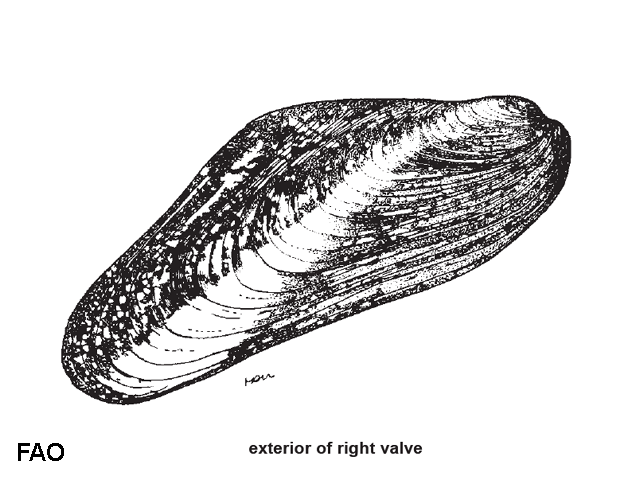| Mytilidae (sea mussels) |
| 8 cm TL (male/unsexed) |
|
benthic; marine; depth range 0 - 25 m |
| Indo-West Pacific: from East Africa to the Philippines; north to Japan and south to Indonesia. |
|
Shell rather inflated, roughly triangular and elongate-ovate in outline. Anterior margin short, slightly protruding anteriorly beyond the umbones. Posterodorsal margin straightish, forming a rather sharp angle with the produced, roundly wedge-shaped posterior margin. Ventral margin long and nearly straight in the posterior 2/3, recurved anteriorly. Outer surface smoothish, with only fine concentric growth marks, frequently eroded towards the umbones. Periostracum hairs not branched, developed on posterior half of the of valves. Hinge line smooth, without teeth or crenulations. Anterior adductor scar present. Internal margins smooth. Colour: outside of shell dull olive-brown, often with a median yellowish radial band. Interior pearly, pale greyish blue to purple. |
| Attached to pebbles or to mangrove prop roots, on muddy bottoms of sheltered bays, especially in areas under the influence of freshwater supply. Littoral and sublittoral to a depth of 25 m (Ref. 348). |
|
Not Evaluated (N.E.) Ref. 123251)
|
|
|
Source and more info: www.sealifebase.org. For personal, classroom, and other internal use only. Not for publication.

